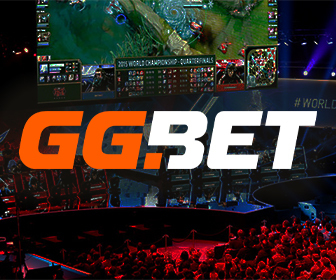Over its centuries-long history, Mahjong has consistently rewarded both casual players and serious strategists. This is not through striking graphics or fast-paced action, but via a subtle interplay of visual awareness, light memory demands, and rhythmic decision-making. These elements are central to what makes the game so absorbing and help explain how Mahjong continues to thrive in a gaming landscape dominated by online convenience and fast-paced titles.
Mahjong has steadily gained traction across digital platforms, moving from its traditional roots into widespread online use. Its presence is now felt across mobile apps, live-streamed matches, and competitive gaming communities. Online platforms now cater to a global audience with mobile apps, browser-based versions, and competitive league integration.
Mahjong’s Digital Expansion and Platform Appeal
This change has allowed Mahjong to scale far beyond its traditional circles. Players are now discovering the game through mobile apps and cross-platform access, while seasoned veterans can enjoy faster matchmaking and tournament tracking without leaving their digital ecosystem. The combination of old rules and new tech has made Mahjong more accessible than ever, transforming it into a staple in today’s strategy gaming landscape.
Accessibility is the main driver here because many online Mahjong platforms offer streamlined interfaces, multilingual support, fast withdrawals, and large game libraries that let players shift seamlessly between casual play and high-stakes tournaments. A fairly new launched Mahjong site, for example, combines traditional mechanics with customizable layouts and a player-first approach, allowing them to play for real money. It meets the needs of both hobbyists and competitive players, delivering speed, clarity, and a chance to win real currency that mirrors today’s digital standards.
Game Popularity and Resurgence
The global Mahjong market is valued at several million dollars as of 2025, with a projected compound annual growth rate of 5% to 8% through 2033, driven by rising popularity and ongoing technological innovation. This expansion is driven by a combination of the game’s enduring appeal and its increasing accessibility across mobile and desktop platforms. On the hardware front, the automatic Mahjong table market reached $1.2 billion in 2024 and is projected to double by 2033.
When factoring in both digital and physical segments, the global Mahjong market is growing steadily, with forecasted annual growth rates between five and eight percent from 2025 to 2033. This momentum reflects a shift in player demographics, as the audience expands from legacy users to younger generations. With widespread adoption through apps, streaming integrations, and tournament play, Mahjong is transitioning from a traditional pastime to a scalable, competitive format with commercial potential.
Visual Scanning at the Heart of Engagement
Mahjong’s gameplay places continuous demands on visual perception. Every round requires players to evaluate their hand while tracking tile movement across the table. This constant scanning mirrors the spatial vigilance required in games like Tetris, where players must adjust patterns quickly and continuously. Tile-tracking in Mahjong reinforces pattern recognition, training the brain to detect subtle shifts that influence outcomes.
The tactile aspect, whether it be physically or digitally arranging tiles, further sharpens immersion. This hands-on interaction engages both motor and visual systems, maintaining high attention levels while keeping the cognitive load balanced. This visual-motor engagement is one reason Mahjong remains mentally engaging even in longer sessions.
Light Memory Tasks to Keep the Mind Alert
Players must also remember previously discarded tiles, assess potential hands, and estimate remaining draws. These light but active memory tasks keep the mind stimulated without crossing into mental fatigue. Successful play hinges on short-term recall and moment-to-moment strategy adjustments, keeping players immersed in a cognitive loop that rewards consistency and attention to detail.
Rhythmic Interactions That Set a Flow State
The cycle of drawing a tile, making a decision, and waiting for the next opportunity creates a rhythm that is both deliberate and immersive. This rhythm is a defining trait of flow-inducing games. Just like Tetris accelerates and maintains tempo through dropping pieces, Mahjong operates through a controlled pace that allows the mind to lock in. The combination of repetition, anticipation, and response aligns with the same principles that govern strategic immersion in games like Into the Breach.
Echoes in Tetris and Into the Breach
This dynamic of scanning, memory, and rhythm also defines other genre-defining games. Tetris constantly challenges spatial awareness and anticipation, rewarding players who maintain clear mental maps of what’s coming. Into the Breach does something similar with tactics and board control, turning enemy prediction into a meditative loop of decisions and reactions.
Despite differences in setting and mechanics, all three games pull players into a tightly engineered mental space where attention is fully occupied, choices feel meaningful, and time often slips away. This immersion is a hallmark of the flow state and one of the key reasons these titles remain popular across generations.
Cognitive Dimensions and Emotional Rewards
The rewards go beyond engagement. Mahjong has been linked to measurable improvements in memory retention, reasoning ability, and attention control. These effects are reinforced over time, particularly in older players who use the game as a structured form of mental exercise. Emotional responses are just as meaningful. Many players describe Mahjong sessions as mentally refreshing, with the focused rhythm providing a calming contrast to daily distractions.

